Fill up with hydrogen at the right pressure
- Details
- Hits: 3706
To dem Hydrogen (H2) as an alternative fuel to achieve a breakthrough, we need attractive hydrogen cars and high-performance commercial vehicles that can be refueled in a nationwide filling station infrastructure. The structure of the corresponding hydrogen gas stations requires a lot Measurement Technology, so that safety when refueling with hydrogen is guaranteed. Wika offers the complex instrumentation for this, such as valves, temperature or pressure sensors.
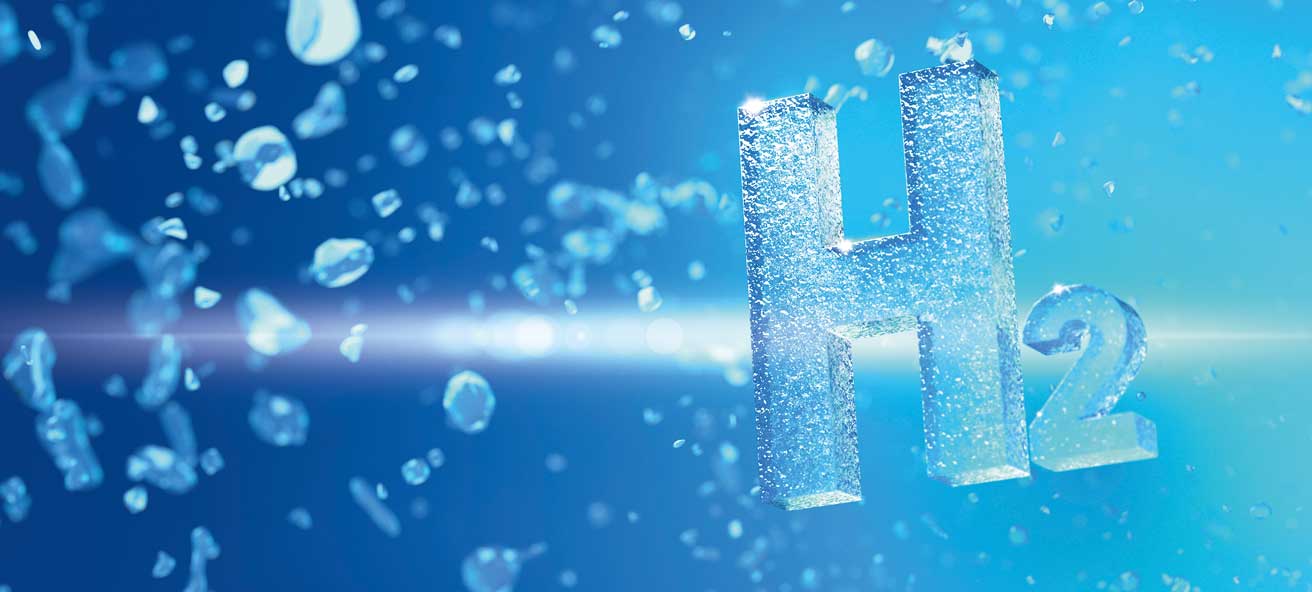
Contents
- The end of the "gasoline" and "diesel" is imminent
- Expansion of the infrastructure for filling up with hydrogen
- Standards for hydrogen infrastructure still in development
- Three general challenges of hydrogen
- Complex instrumentation at hydrogen filling stations
- Conclusion and outlook for hydrogen filling stations
The end of the "gasoline" and "diesel" is imminent
 Climate change is without a comprehensive mobility change not stopping, let alone turning back. Conventional internal combustion engines must therefore be replaced by environmentally friendly alternatives such as e.g. B. the fuel cell or the electric drive can be replaced. The phase-out of vehicles running on petrol or diesel will be accelerated the more vehicles with emission-free drives are in demand.
Climate change is without a comprehensive mobility change not stopping, let alone turning back. Conventional internal combustion engines must therefore be replaced by environmentally friendly alternatives such as e.g. B. the fuel cell or the electric drive can be replaced. The phase-out of vehicles running on petrol or diesel will be accelerated the more vehicles with emission-free drives are in demand.
Hydrogen-powered vehicles are increasingly coming into focus here, because the H2 fuel cell has performance data similar to that of vehicles powered by petrol or diesel. Ambitious goals for H2 mobility in road traffic are being formulated worldwide, especially in the commercial vehicle sector. Logistics and transport companies have already started to convert their fleets to hydrogen-powered vehicles. Hydrogen-powered cars are also appearing on the streets more and more often.
Expansion of the infrastructure for filling up with hydrogen
The further development of environmentally friendly mobility depends crucially on the expansion of the corresponding filling station infrastructure. We also need an appropriate filling station network for hydrogen, which guarantees a supply without detours. There are currently around 700 worldwide Hydrogen refueling station (HRS). The number is expected to increase to 2030 by 6000. In Germany we currently have the densest network of hydrogen filling stations in Europe. A total of 95 such H2 filling stations were in operation at the beginning of the year.
 Analogous to the expansion of the hydrogen filling station infrastructure, the production of green hydrogen increase. This means that hydrogen can be obtained by electrolysis Renewable energies meant. This is the only climate-neutral form of energy generation. According to information from the energy company EnBW, 40 plants in Germany are currently producing green hydrogen. Such electrolysers are ideally located near large wind farms or solar parks.
Analogous to the expansion of the hydrogen filling station infrastructure, the production of green hydrogen increase. This means that hydrogen can be obtained by electrolysis Renewable energies meant. This is the only climate-neutral form of energy generation. According to information from the energy company EnBW, 40 plants in Germany are currently producing green hydrogen. Such electrolysers are ideally located near large wind farms or solar parks.
Your product will be delivered to the hydrogen filling station in so-called tube trailers. These are trailers with a combination of seven tubular steel tanks. The tanks are increasingly being replaced by Type IV carbon fiber tanks because they offer a higher tank pressure of 500 bar and more instead of the previous 200 bar. They are also lighter, which allows a higher payload. This means that 1 t of fuel can be transported on a tanker truck. Comparatively, the tank filling of a car is about 4 to 5 kilograms, that of a truck is 40 kilograms and the tendency is increasing.
Standards for hydrogen infrastructure still in development
Parallel to the development of the infrastructure, the hydrogen industry is still working on its standards. New guidelines are drawn up and existing specifications are adapted to new developments. The industry is pushing for the comprehensive standardization of components and processes. The usability of H2 as a fuel must be placed on a global basis - while ensuring the highest possible security levels understood.
 Reading tip: Measurement technology for hydrogen production
Reading tip: Measurement technology for hydrogen production
The Wika Alexander Wiegand SE & Co. KG from Klingenberg and other manufacturers of measuring technology, which offer products for monitoring and control at the gas station, find it difficult to find their way around in the changing landscape of standards. It is often still unclear which guidelines are to be defined for one's own hydrogen portfolio, regardless of whether it is a question of new solutions or the modification of existing products. Permanent specifications for hydrogen filling stations can be found, for example, in the ISO 19880 series of standards. And of course H2 also has very specific properties that affect the application-specific development of measurement and other technology.
Three general challenges of hydrogen
Regardless of the fuel station-specific requirements, the physico-chemical properties of H2 are already significant Requirements for the measurement technology. They are the following:
- Because hydrogen is highly flammable, there are often corresponding requirements for stationary applications explosion protection of the devices used. Due to its small particle size, H2 penetrates materials and forms an explosive mixture in the air at concentrations as low as 4%. For this reason, connections with welded joints or metal seals are generally used for the process adaptation of the measuring devices.
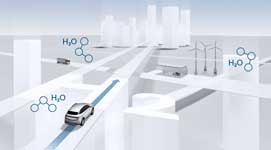 7 good reasons for hydrogen drive & fuel cell
7 good reasons for hydrogen drive & fuel cell
- Because H2 molecules are extremely small, they penetrate metal structures. Here you can material embrittlement and thus pose a safety risk. Therefore, manufacturers of measuring devices for hydrogen applications prefer to use austenitic steels such as 316L.
- Hydrogen impairs at Sensors the desired long-term stability of the measurement signal. Its adhesion to the resistor and/or its penetration into sensitive structures of the electronic measuring device can lead to a signal offset or measurement error. The use of separating layers can prevent the penetration of hydrogen. The chemical element gold, for example, is suitable as a material for this.
High pressures with a large temperature range
 In addition to these generally applicable requirements for hydrogen applications, the installation of devices in hydrogen filling stations poses other specific challenges. The measurement technology and control technology must be here for Pressures up to 900 bar be designed for temperatures between -40° and +85 °C. These specifications result from the construction of an H2 filling station and the filling up with hydrogen itself:
In addition to these generally applicable requirements for hydrogen applications, the installation of devices in hydrogen filling stations poses other specific challenges. The measurement technology and control technology must be here for Pressures up to 900 bar be designed for temperatures between -40° and +85 °C. These specifications result from the construction of an H2 filling station and the filling up with hydrogen itself:
As already mentioned, the hydrogen is delivered in tube trailers at a pressure of currently 200 bar. Then compact Compressors the H2 in high-pressure tanks to almost 900 bar. This is done in several stages. This compression is matched to the tank pressure of the car at 700 bar. The truck tank pressure is currently still 350 bar. In the future it is to be increased to 700 bar to increase range. Data is exchanged between the sensors of the pump (dispenser) and the sensors on the vehicle tank, with which the necessary pressure and flow values can be regulated.
The refueling process must also be as time-optimized as possible, with pressure and temperature play an important role: On the one hand, the higher the pressure difference between the vehicle and the filling station, the faster the hydrogen flows. The specified pressure of the vehicle tanks must not be exceeded here. On the other hand, the temperature curve along the tank route plays a role, because the hydrogen heats up during expansion. For this reason, the gas is first cooled down to -40 °C using a heat exchanger in order to maintain the 85 °C up to which the vehicle tanks are specified. The closer the temperature gets to 85 °C, the more the refueling process has to be slowed down and readjusted by cooling.
Complex instrumentation at hydrogen filling stations
Given these potentially critical criteria at the tank stations, the filling line The hydrogen filling stations are complex instrumented with sensors for temperature, pressure and flow as well as vent and shut-off valves. Due to the high pressures, Coriolis flowmeters in particular are used for flow rate monitoring.

The temperature and pressure measuring points contribute significantly Operational safety at. The thermometers must have short response times and be pressure-resistant: the installation of a protective tube is unsuitable because of the necessary rapid response. The tip of the temperature sensor must withstand unprotected pressures of up to 875 bar. However, it must be so compact that it affects the media flow as little as possible. A connection with a cone-thread screw connection reliably seals the measuring point.
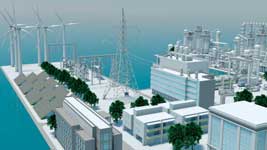 Hydrogen + fuel cell: components for energy generation
Hydrogen + fuel cell: components for energy generation
The pressure sensors for hydrogen filling stations usually have a nominal pressure of 1000 or 1050 bar. The value results from the nominal tank pressure in the vehicle plus a temperature-related safety factor. For a car, that is 700 bar. The sensors must also withstand the temperature range between -40 °C and +85 °C that is typical for HRS. Explosion protection and, at some measuring points, even SIL certification are also required.
Conclusion and outlook for hydrogen filling stations
With the construction of a nationwide filling station infrastructure for hydrogen cars, the manufacturers of measuring technology are opening up new perspectives in the promising H2 Mobility market segment. Because this requires a large number of increasingly powerful hydrogen refueling stations and electrolysers for the climate-neutral production of green hydrogen. For large H2 filling stations with the appropriate space, such as at motorway service areas, it may even be profitable to produce their own hydrogen with green electricity. A construction of pure hydrogen pipelines for the direct connection of filling stations to the future supply network is also conceivable.
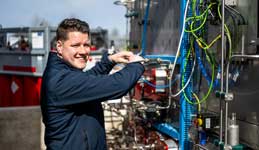 IO module secures Resato hydrogen filling stations
IO module secures Resato hydrogen filling stations
The metrological requirements for the hydrogen infrastructure can be designed more purposefully when the current standardizations have been largely completed. The hydrogen industry is striving to reduce the costs of building and operating filling stations through standardization, efficient components and optimized processes so that filling up with hydrogen becomes attractively priced. For the measurement technology manufacturer, this results in additional requirements in the direction of increase in efficiency.
Wika exhibits at the Hannover Messe 2023.
You might also be interested in...
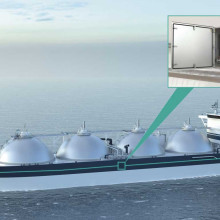
Green hydrogen on the advance in Germany
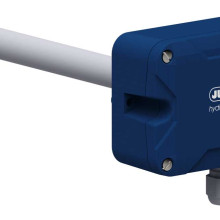
Transducer | Transmitters for pressure, temperature and more
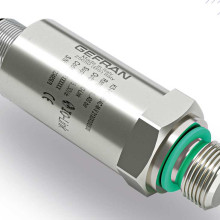
Pressure sensors | Pressure measurement technology goes digital

Control Fair 2024 | The industry is already looking forward to Stuttgart

Christian Wirl is Portfolio Manager Hydrogen at WIKA Alexander Wiegand SE + Co. KG, Klingenberg.
